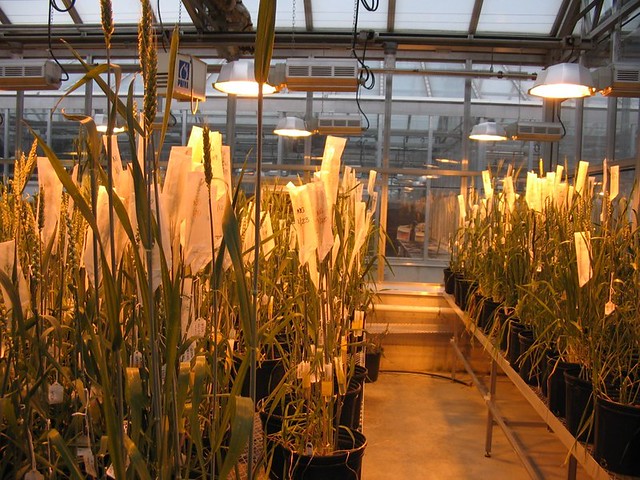
With a name like Fhb1, this particular gene is unlikely to ever become a household name.
But it has the potential to combat a fungal disease that has been plaguing wheat farmers for years. Wheat scab can cripple a farmer’s yield and cost millions of dollars in crop losses.
So when the gene was discovered years ago—in one of 62,000 wheat plants kept viable at the Agricultural Research Service (ARS) National Small Grains Collection in Aberdeen, Idaho—scientists knew they had a potentially powerful genetic tool on their hands.
This really important gene was in a wheat plant with origins in China that produced poor-quality grain and unacceptably low yields and was susceptible to other diseases. So researchers needed to cross breed it with commercial wheat varieties to produce a scab-resistant wheat suitable for U.S. markets.
That would take more than a decade (the first crosses were made in 2004) and contributions from an international network of researchers at 90 locations. But the goal has finally been reached. A new scab-resistant, soft, red wheat suitable for cakes and cookies was recently released, and enough seed will be available this fall for it to be produced on thousands of acres, primarily on the East Coast, says José M. Costa, the ARS national program leader who began the project when he was a professor and wheat breeder at the University of Maryland.
Much of the funding came from the U.S. Wheat and Barley Scab Initiative, an ARS project designed to minimize the threat posed by Fusarium head blight (scab). But Costa says the achievement also would not have been possible without some invaluable ARS assets: its collection of wheat plants, its extensive research network and wheat quality labs, and facilities capable of quickly deciphering a plant’s genetic make-up. “Like almost all new wheat varieties produced these days, this was only made possible because of a unique ARS support system that is largely unknown to the general public,” he says.
The small grains collection in Aberdeen was vital, he says. It’s a storehouse of wheat plants equipped with genes that can combat crippling diseases, increase yields, enhance drought tolerance and help address emerging threats.
Breeding new plants can be tedious and frustrating. Try transferring a specific gene into a plant, and other genes inevitably come along with it—sometimes bringing undesirable traits. That’s why Costa also credits the contributions of the ARS small grains genotyping centers in Raleigh, North Carolina; Pullman, Washington; Fargo, North Dakota; and Manhattan, Kansas. Those centers were uniquely equipped to screen wheat plants to determine if they retained the desired version of the key gene.
Wheat plants also were screened across an international network of 90 nurseries so they could be assessed in a range of climates, soils, growing conditions and pathogen pressure. The finalists were tested at the ARS Soft Wheat Quality Laboratory in Wooster, Ohio. The lab is one of four such ARS labs, and the only one suitable for evaluating the kind of soft, red wheat varieties produced on the East Coast.
New wheat varieties don’t show up on store shelves, of course. But this one is likely to make its way into your cakes and cookies for years to come.
